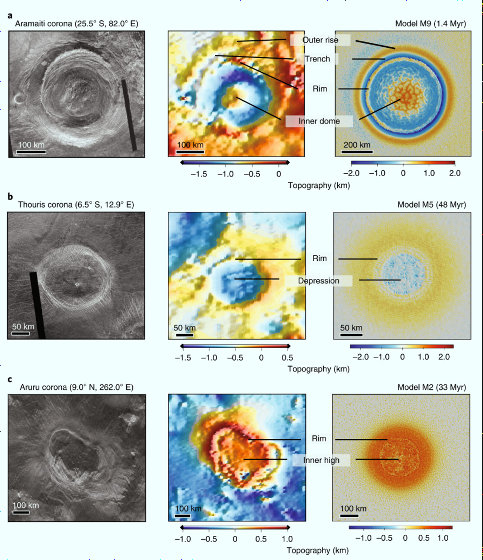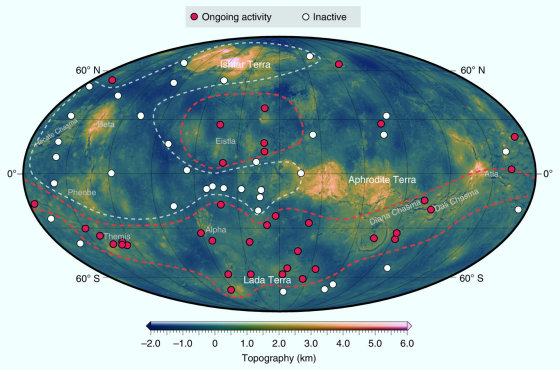Venus's volcanic activity is 'paused but not stopped', the active place is identified for the first time

Venus was created about 4.6 billion years ago, and although volcanic activity had been active in the past, it was not clear how modern it would be. But new researchers have identified where volcanic activity is taking place on Venus and have shown that 'Venus's volcanic activity isn't over, it's just dormant.'
Corona structures driven by plume–lithosphere interactions and evidence for ongoing plume activity on Venus | Nature Geoscience
The Venus'ring of fire' | EurekAlert! Science News
https://www.eurekalert.org/pub_releases/2020-07/ez-tv072120.php
Scientists discover volcanoes on Venus are still active
https://phys.org/news/2020-07-scientists-volcanoes-venus.html
Research was conducted by the research teams at the University of Maryland and the Institute of Geophysics, Institute of Technology Zurich. Laurent Montesi, professor of geology, co-author of the paper, was able to show 'a particular structure, not an ancient volcano, but a dormant active volcano'. 'This is the first time for us.' 'This research changes our view of Venus, which is an 'almost inactive planet,' to 'it moves violently inside, growing active volcanoes.' Said.
Ring-shaped structures called coronas are scattered on the surface of the planet. The corona is formed when a high-temperature substance called plume in the deep part of the planet comes to the surface of the earth. Even on Earth, there is a 'mantle plume' formed in the Hawaiian Islands in the same way. Researchers have always thought that 'plumb may have a newer surface on Earth than Mars and Mercury, which have cold interiors.'
Below is Corona on Venus.

On the other hand, it has been thought that the corona of Venus may be a remnant of ancient activity. Due to the low temperature of Venus, it was speculated that the geological activity inside the planet would slow down and that the substance inside would also solidify.
The new study used 3D simulations to investigate how plumes change the structure of the corona. As a result, it was shown that 'the corona's terrain depends on the thickness and hardness of the stratum where the plume collides' and 'the corona's terrain is directly related to the activity of underground magma'. It was
Furthermore, from the above observations, more than 100 coronas on Venus were 'made on top of plumes that are now progressively rising and carrying melted material' and 'on top of plumes that have already cooled and become inactive. It was found that it can be classified into two.
When all coronas were plotted on Venus according to this classification, it was found that the 'corona formed on the active plume' is distributed in a band in the southern hemisphere of Venus. Thirty-seven active plumes, though a small fraction of the total, are thought to be like the

This research will be an important clue to understanding the inner workings of the planet. In 2032, the European Space Agency (ESA) plans to carry out a mission called EnVision for the purpose of geological survey of Venus, but this research result will identify the place to be focused on in the mission It is expected to be useful.
Related Posts:
in Science, Posted by darkhorse_log







